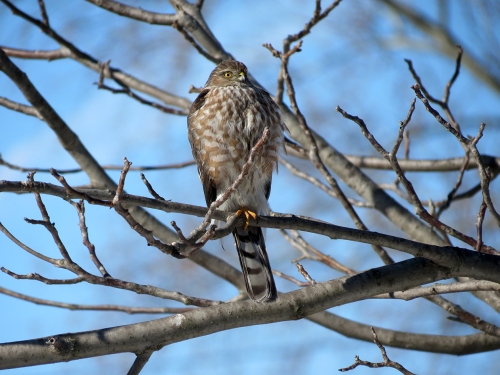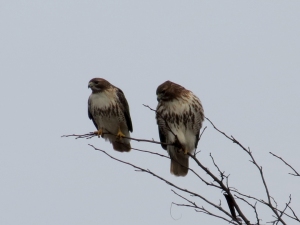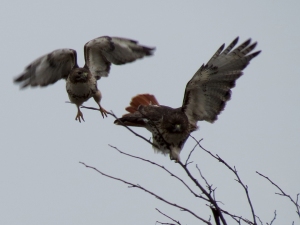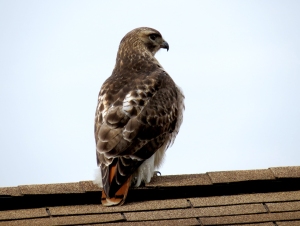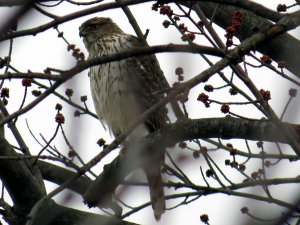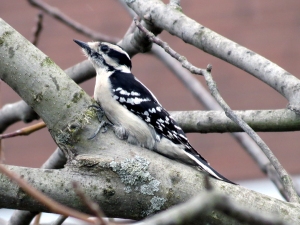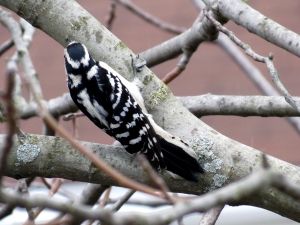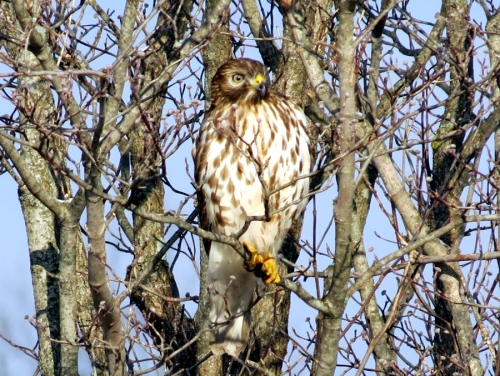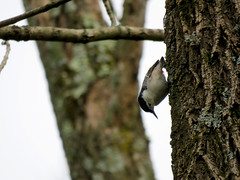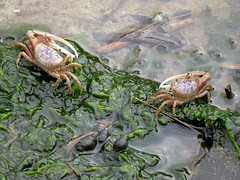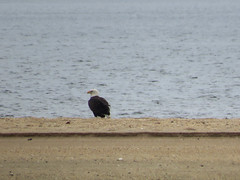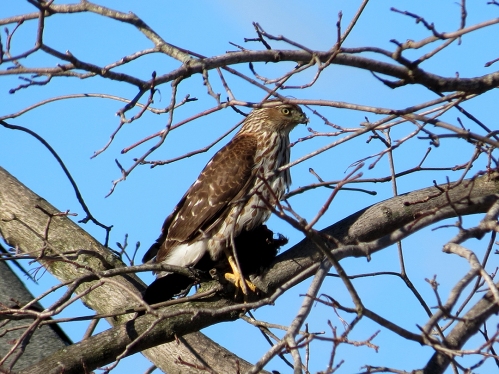 A few mornings ago, I walked into the backyard to put something away; suddenly a hawk flew from the grass, right in front of me, up into a tree branch. The spot where he had been on the lawn was covered with the feathers of a grackle. The feathers were fresh. I left momentarily to get my camera and returned to take a few photos of the hawk in the tree before it decided to fly away. I didn’t realize until I downloaded the pictures (and could look at them closely) how fresh those grackle feathers really were — the grackle’s body was being firmly held underneath the hawk. I had interrupted the hawk’s breakfast. The grackles had only returned to our backyard in the past week or so after being absent all winter. The hawk must have been thrilled with their recent return!
A few mornings ago, I walked into the backyard to put something away; suddenly a hawk flew from the grass, right in front of me, up into a tree branch. The spot where he had been on the lawn was covered with the feathers of a grackle. The feathers were fresh. I left momentarily to get my camera and returned to take a few photos of the hawk in the tree before it decided to fly away. I didn’t realize until I downloaded the pictures (and could look at them closely) how fresh those grackle feathers really were — the grackle’s body was being firmly held underneath the hawk. I had interrupted the hawk’s breakfast. The grackles had only returned to our backyard in the past week or so after being absent all winter. The hawk must have been thrilled with their recent return!

Blog Resources
Follow on Twitter
We’re on Facebook
Blog Topics
- Bloggers (2)
- Insects and Animals (65)
- Outdoor spots (47)
- Plants and Flowers (17)
- Polls (1)
- Uncategorized (3)
- Weather and Sky (34)
Archives
Blogroll
- Back to Walking
- Beautiful Wildlife Garden
- Bird Light Wind
- Dawn's Bloggy Blog
- EarthOceanSkyRedux
- Ecosystem Gardening
- Eye on Nature
- Faith, Fabric and Photos
- Next-Door Nature
- NJ Urban Forest
- Owls About That Then!
- Photo Nature Blog
- Skywatch Friday
- Spokes and Petals
- Steve Creek Outdoors
- The (Urban-Wildlife) Interface
- The Free Quark
- Trails of Life
- Wild Fidalgo – Watching Wildlife in the Pacific Northwest
- WP Nature Photography

